The South Pole Energy Challenge

History was made on the 15th of January 2018 when the South Pole Energy Challenge (SPEC) team led by Robert and Barney Swan reached the Geographic South Pole. For the 23-year-old Barney, and his teammates mountaineer Martin Barnett and filmmaker adventurer Kyle O’Donoghue, the epic journey involved 56 days of walking on skis, making them the first persons to reach the South Pole using only alternative fuels for survival.
The three of them, along with Robert Swan and the SPEC Last Degree Team reached pole days after the 32nd anniversary of the 1986 "In the Footsteps of Scott" expedition. The only woman on the SPEC Last Degree Team was Ghazala Ahmad Mear, whose husband was one of the explorers on the 1986 expedition. The historic week also marked the 106th anniversary of Captain Robert Falcon Scott’s arrival at the South Pole on 17 January 1912, only to discover that Roald Amundsen's Norwegian expedition had beat them by weeks.
On 11th January 1986, Robert Swan, Roger Mear and Gareth Wood had reached the South Pole after 70 days without the aid of any radio communications or back-up support, having hauled 160 kg sledges on the longest unassisted march ever made in history. Three years later, he led a team which reached the North Pole on 14 May 1989, making him the first person in history to walk to both the Poles.
The 600-mile march on foot started from the Antarctic coast on November 22nd 2017, this being the first South Pole expedition to be entirely powered by renewable energy. The SPEC was conceived as an attempt to demonstrate how humans can survive on alternative fuels even in the harshest environment on earth. Speaking to reporters, Robert Swan declared, “I am here on a mission to test technology and bio fuels that are currently available.
“If they can work here, in this inhospitable and remote land, then surely they will work at home; in your home. The advanced bio fuels we have with us, were produced by the Shell technology center in Bangalore India. We are relying on them to melt snow, heat water and dry clothes in the tents. It has proven to be much more efficient than I first anticipated.
They were developed solely for this expedition using a technology that turns solid waste into a biofuel. So they turned wood chips into this biofuel. Could this be another step in the energy –mix as we transition away from fossil fuels and into clean energy? I hope so….every effort counts,” he added.
Barney was forthright about what the SPEC expedition meant to him- “My generation has too much information and we're tired of the inconvenient truth but this expedition is about the convenient solutions that can address the current climate change challenges.”
The team reached the Thiel Mountains, the halfway mark to the South Pole, on the 14th of December, the 23rd day of the expedition. The 61 year explorer had to make a tough decision soon after, returning to the Union Glacier Basecamp, to enable the other members of the SPEC team to increase their pace.
Robert Swan said in an interview, “Definitely, without a doubt, this will be the last time I'm going to bloody walk anywhere on skis in the Arctic or the Antarctic. I promised myself that 32 years ago, Barney persuaded me to come back, a bit like Rocky coming out of retirement, but I'm not doing it again.”
However, after recuperating for about 2 weeks, he accompanied the Last Degree Team comprising of Ghazala Ahmad Mear, Daniel D'Hotman, David Bunch, Tem Doran, Chris Powell and Keith Sauls to rejoin the SPEC expedition team and walk the final 60 miles. Robert Swan and the Last Degree Team started the march from 890 South on the 3rd of January, walking ahead of the SPEC team on the great white plains of the Polar Plateau.
On 11th January, the two teams were united, and Robert and Barney Swan continued the South Pole quest together. One of the most poignant images to emerge from the expedition was the father and son hug at the reunion. On the anniversary of his first walk to the South Pole, Robert Swan kept the spirits up with inspiring stories from 32 years back.
The South Pole Station was spotted by Barney on the 54th day of the expedition. The team had to endure whiteout conditions again during the final days of the expedition. They marched on in extremely cold conditions, worsened by the wind chill and poor visibility, and finally reached the Geographic South Pole on the 15th of January.
In his final message from the Antarctic, before the SPEC team departed for Punta Arenas, Robert Swan revealed that Barney had extremely painful feet because of frostbite, although both the expedition doctors ruled out any permanent damage. It was a proud father, Robert Charles Swan, OBE, FRGS, handing over the baton to a son who had earned his respect, the hard way. This glorious achievement was driven by profound motivation to demonstrate that a sustainable future was possible and in his message, Robert Swan hailed the South Pole Energy Challenge teams for having participated in the first ever renewable energy expedition to reach the South Geographic Pole.
• Igniting Minds Associate Editor Rituraj Phukan was a teammate of Robert Swan, Barney and Kyle O’Donoghue on the International Antarctic Expedition 2013. He is also the Chief Operating Officer for Walk For Water, District Manager for The Climate Reality Project and Secretary General of Green Guard Nature Organization. He can be reached at rrajphukan@gmail.com
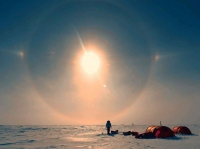
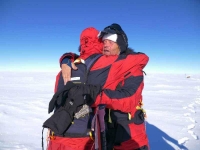
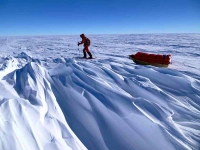
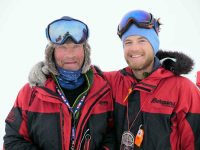
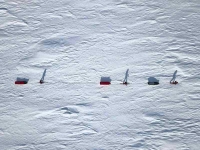
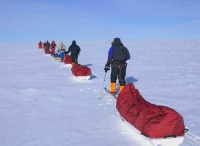
Videos
Videos
Videos
@ignitingmindsmagazine
@IgnitingMindsin
Top Stories
- Dedicated to the Sparrows, Forests and Water
- The United Nations Decade of Ecosystem Restoration
- How technology in agribusiness affects climate change, a concrete solution.
- Restless Youth Seek Climate Action
- Telangana Jagruthi International Youth Leadership Conference 18,19,20th January 2019
- Sports for Climate Action Framework launched at COP24
- COP24: One Week of Misgivings
Videos
Businesses
- Can Home Remedies Increase Your Height.
- Success Comes When We Make Innovation a Habit
- Do You Want to Be a Green Entrepreneur?
- Igniting Minds Official Web Portal Launched in New Delhi.
- Strive To Drive The Life
- Do Mobile Apps Facilitate Small Businessmen?
- Water Conservation, Preservation and Restoration. A Global Engineering Challenge.